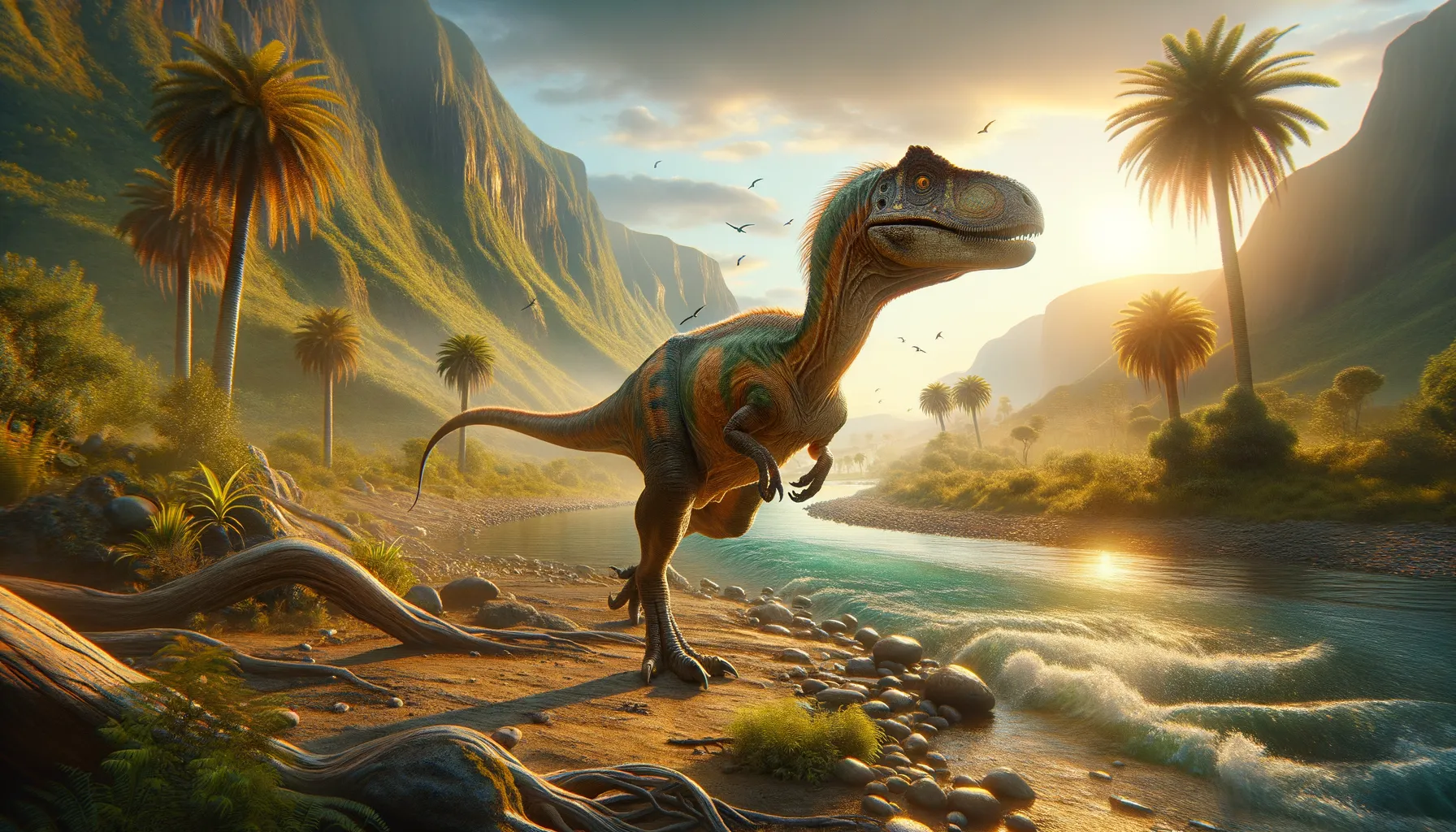
Diluvicursor
Sprinting through ancient landscapes.
Period
Cretaceous
Length
Roughly 1.2 meters (about 4 feet) long.
Height
Around 30 cm (about 1 foot) tall.
Weight
Approximately 3.5 kg (about 7.7 pounds).
Diluvicursor was a small, nimble dinosaur that roamed what is now Australia during the Cretaceous period. Known for its agile build, this dinosaur likely relied on speed to evade predators. Its remains were found in a region that was once part of a vast river system, offering new insights into the ecosystem it inhabited. The discovery of Diluvicursor helps paleontologists understand diverse dinosaur communities and how they adapted to their environment.
Diet
Diluvicursor was herbivorous, feeding on a diet primarily consisting of ferns and other low-lying vegetation. This dinosaur's small size would have made it adept at foraging amongst dense underbrush.
Hunting
As an herbivore, Diluvicursor did not hunt, but it had to be vigilant to avoid carnivorous predators in its environment.
Environmental challenges
Diluvicursor lived in a dynamic riverine ecosystem, which presented challenges such as seasonal flooding. These environmental shifts required adaptability in dietary and mobility behaviors. Additionally, avoiding larger predators was crucial for survival.
Speed
Likely a swift runner due to its small size and build.
Lifespan
Estimated lifespan is not well-known; similar dinosaurs lived several years.
First discovery
Discovered in 2017 in Victoria, Australia.
Fun Facts
- Diluvicursor was a small, speedy dinosaur that lived in what is now Australia during the Cretaceous period.
- The name 'Diluvicursor' means 'flood runner,' which reflects its likely quick and agile nature, possibly useful for escaping predators or searching for food.
- Unlike many dinosaurs, Diluvicursor's remains were discovered in an area that was once a floodplain, giving clues to its living environment and habits.
- This dinosaur is believed to have been herbivorous, meaning it primarily fed on plants.
- Though it wasn't very large, only estimated to be about 1.2 meters long, Diluvicursor's lightweight build suggests it could have been quite fast.
- The discovery of Diluvicursor helps scientists understand more about the diversity of dinosaur life in ancient Australia.
- Scientists believe Diluvicursor had a strong tail, possibly used for balance as it ran quickly on two legs.
Growth and Development
Young Diluvicursor likely grew rapidly to improve their chances of escaping predators. Growth patterns may have been influenced by environmental factors and resource availability. Fossil studies suggest juveniles relied on speed and agility from an early age.
Habitat
Diluvicursor inhabited a lush, riverine region with abundant vegetation. The environment, teeming with diverse plant life, provided ample food resources. However, life in such habitats demanded constant alertness for predators and environmental changes.
Interaction with other species
Diluvicursor shared its habitat with various other dinosaurs, and interaction mainly involved avoiding larger carnivores. It would have competed with similar herbivores for food resources. These interactions played a role in shaping its behavioral adaptations.
Natural lifespan
Its natural lifespan remains speculative but might align with that of similar small dinosaurs.
Reproduction
Diluvicursor, like many dinosaurs, is presumed to have laid eggs. Parental care after hatching remains a subject of study, but young might have been somewhat independent early on.
Social behaviour
Whether Diluvicursor lived in groups remains unclear, but grouping could offer protection from predators. Its social structure would depend on factors like food availability and predation pressure.
Fossil locations
Fossilized remains of Diluvicursor have been primarily found in southeastern Australia, specifically in the Gippsland region of Victoria. These discoveries provide crucial evidence about dinosaur life on the ancient southern continents.
